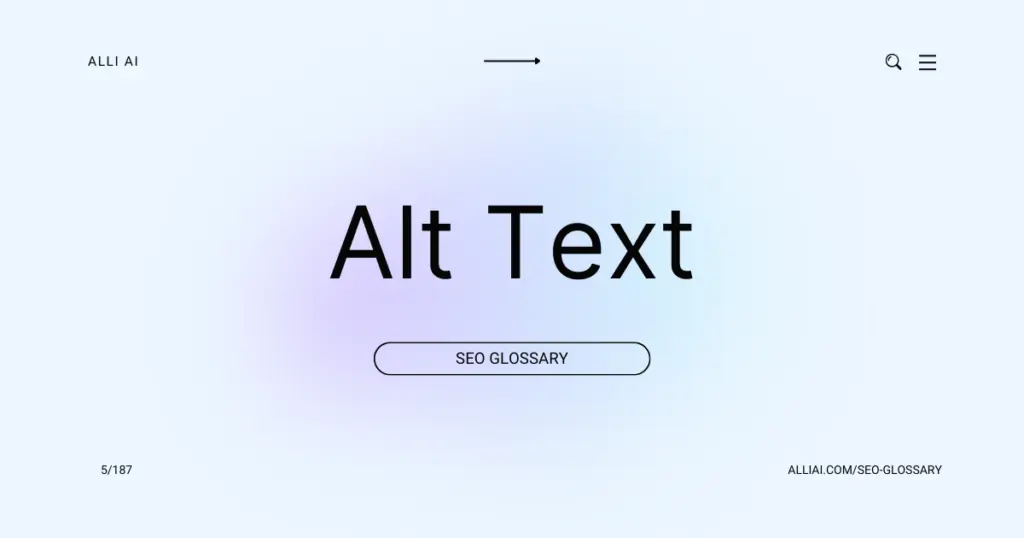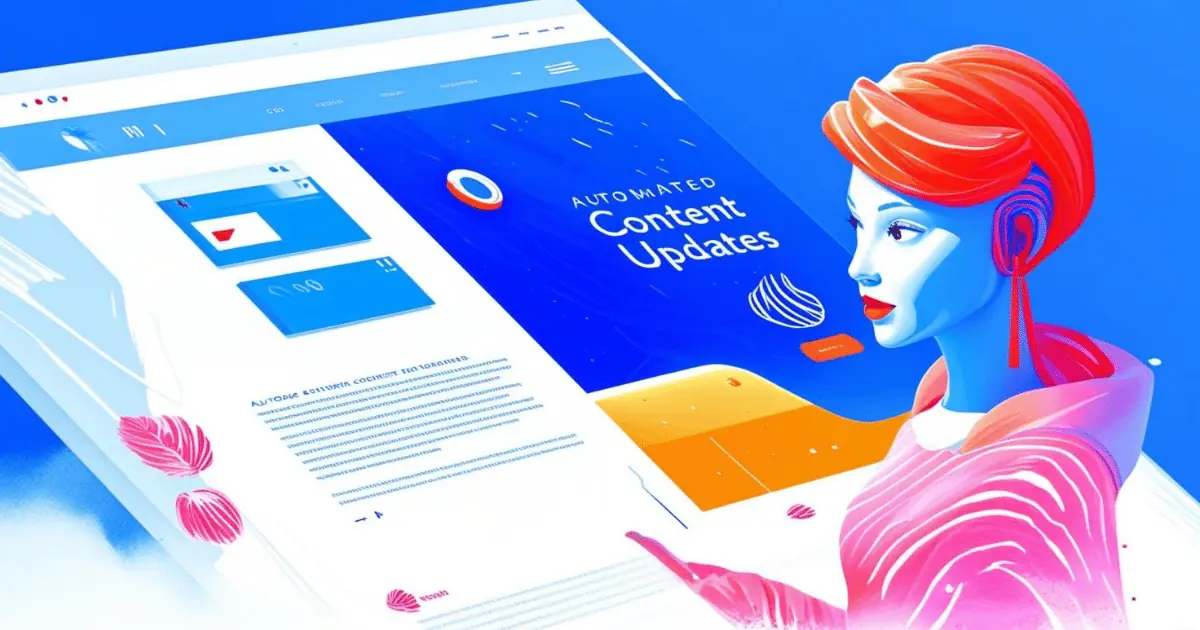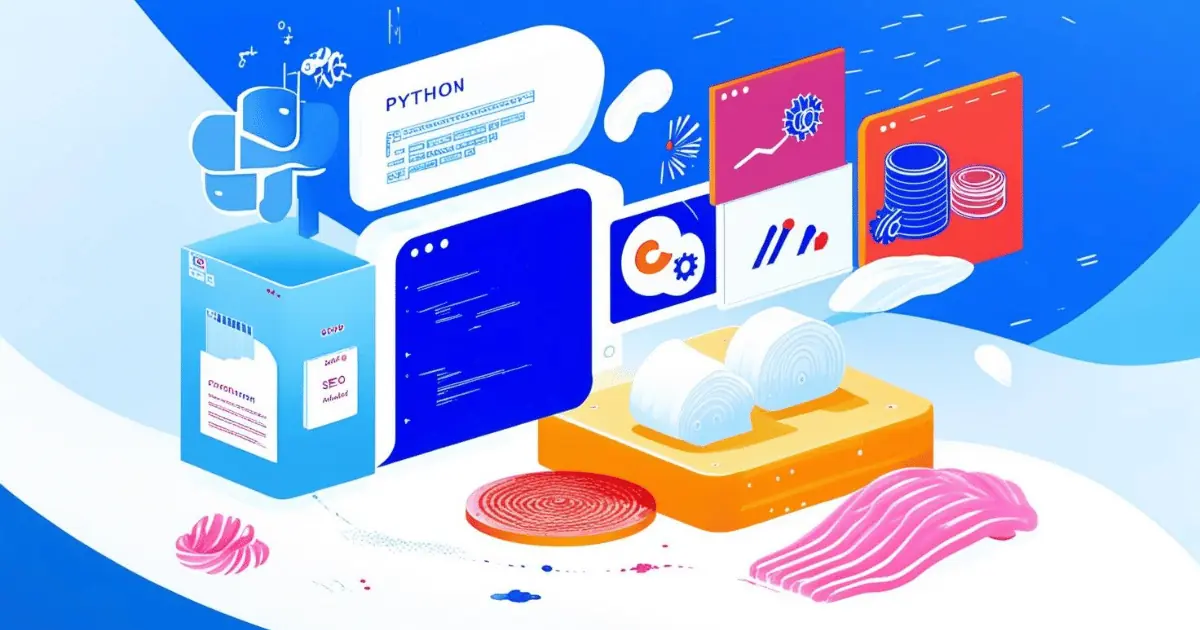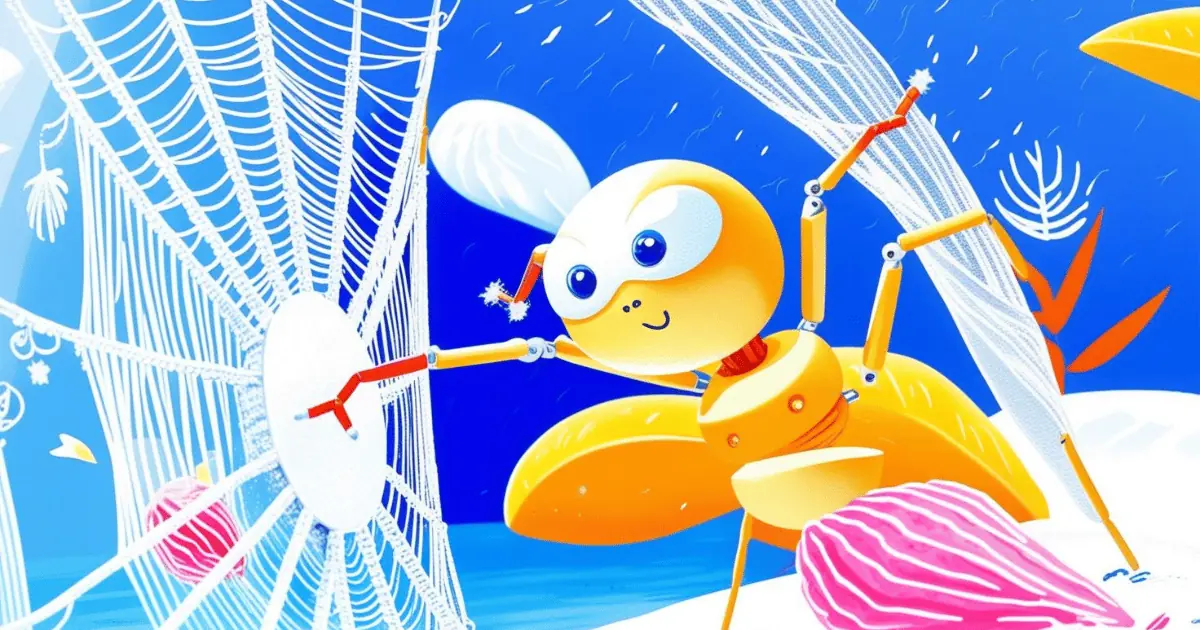What Does Alt Text (Alternative Text) Mean?
Alt text, short for alternative text, is a brief description of an image on a webpage used to describe its appearance and function. This description is embedded in the HTML code and helps search engines understand the image content, improves accessibility for people who use screen readers, and serves as a placeholder if the image fails to load.
Where Does Alt Text (Alternative Text) Fit Into The Broader SEO Landscape?
Alt text is crucial for SEO because it helps search engines understand the content of images, aiding in indexing and providing context to the images used on a website. This contributes to better image search rankings. It also improves accessibility for users who rely on screen readers by describing what the image depicts, enhancing the user experience. Additionally, in cases where images fail to load on a webpage, alt text provides a descriptive placeholder, keeping the information accessible. This practice can also contribute indirectly to SEO by potentially reducing the site’s bounce rate and increasing the time users spend on the page.
Real Life Analogies or Metaphors to Explain Alt Text (Alternative Text)
1. Alt text is like a guide dog for the internet: Just as a guide dog helps a visually impaired person navigate through the physical world, alt text helps screen readers describe images on a web page, making the digital terrain accessible to those with visual impairments.
2. Think of alt text as subtitles for a picture: Just as subtitles provide a text alternative for the dialogue in films for those who can’t hear the audio, alt text provides a textual description of images on web pages for those who can’t see them.
3. Alt text as backup singers: In a band, if the lead singer’s microphone goes out, the backup singers help keep the tune and lyrics flowing. Similarly, if an image fails to load on a website, the alt text steps in to explain what’s missing, ensuring the user still gets the message.
4. Consider alt text as a label in a museum: When you visit an art exhibit, each piece has a label next to it giving you context about the artwork. Alt text serves a similar purpose for images on the web, offering context and description, enriching the viewer’s understanding especially when they can’t “see” the artwork.
5. Alt text as a map legend: A map without a legend can be confusing and its symbols incomprehensible. Alt text acts like a legend for images on the internet, explaining what they are and ensuring they add value to the text around them, even when the visuals aren’t visible.
How the Alt Text (Alternative Text) Functions or is Implemented?
1. Alt Text Definition: Alt text, short for alternative text, is an attribute added to an image tag in HTML. It provides a textual alternative to visual information for image files displayed on web pages.
2. HTML Implementation: The alt attribute is placed within the image tag (``) in HTML. It looks like this:
“`html

“`
3. Content: The content of the alt attribute should describe the image’s appearance and function concisely. For example, if the image is a button to submit a form, the alt text could be “Submit form button.”
4. Accessibility: Screen readers use the alt text to read the description aloud, allowing visually impaired users to understand what is displayed.
5. SEO Relevance: Alt text provides context to search engine crawlers about the image content, aiding in image search optimization.
6. Fallback Scenario: If an image fails to load on a webpage, the alt text is displayed in place of the image, informing users about what image was supposed to be there.
7. Guidelines Compliance: Usage of alt text is a part of web standards compliance (like W3C) and also adheres to accessibility guidelines such as WCAG.
Impact Alt Text (Alternative Text) has on SEO
Alt Text improves SEO performance by helping search engines understand the content of images, which can contribute to better indexing and relevance in search results. It enhances accessibility for users with visual impairments using screen readers, improving user experience and potentially increasing time on site and engagement, which are positive signals to search engines. Additionally, having descriptive Alt Text can help images rank in image search results, driving more traffic to the website. Properly used Alt Text can also provide semantic meaning to images, supporting site context in relation to targeted keywords, thus potentially improving rankings for those keywords.
SEO Best Practices For Alt Text (Alternative Text)
1. Choose Descriptive Keywords: Identify the main subject of the image and think of relevant keywords that describe the image accurately.
2. Be Specific: Include specific details that are visible in the image and relevant to the content. E.g., instead of saying “dog,” say “black Labrador retriever playing fetch.”
3. Keep It Concise: Limit the alt text to 125 characters so that it stays informative without being overly lengthy.
4. Use Keywords Wisely: Integrate primary keywords naturally into the alt text that correspond to the content of the image.
5. Avoid Keyword Stuffing: Do not overload your alt text with keywords; use them thoughtfully and only if they enhance the description of the image.
6. Include Text in Images: If the image contains text (like a graph or infographic), transcribe the text in the alt attribute.
7. Avoid Using “Image of” or “Picture of”: Start directly with what the image is about; screen readers already denote the object as an image.
8. Mention Color if Relevant: If color is crucial to the context of the image, include it in the description.
9. Use Proper Grammar: Write in complete sentences or clear phrases with correct grammar to enhance readability and understanding.
10. Consider Context: Tailor your alt text depending on the context where the image is used within the article or webpage.
11. Test with Screen Reader Software: To ensure accessibility, test the alt text with screen reading tools to hear how it would be interpreted audibly.
12. Update Alt Text If Image Changes: If an image is updated or changed, make sure to update the alt text to reflect the new content.
Common Mistakes To Avoid
1. Overstuffing Alt Text with Keywords:
– Avoidance: Use natural, descriptive language and only include keywords when they are directly relevant to the image and its context on the page.
2. Using Generic Descriptions:
– Avoidance: Provide specific details about the image that are contextually relevant and informative, rather than generic descriptions like “image” or “photo.”
3. Ignoring Alt Text:
– Avoidance: Ensure every image that conveys content or meaning has appropriate alt text to improve accessibility and SEO.
4. Writing Lengthy Alt Text:
– Avoidance: Keep alt text concise, ideally under 125 characters, to ensure it is effectively useful for people using screen readers.
5. Forgetting Non-Text Content:
– Avoidance: Include alt text for all forms of non-text content (graphs, charts, icons, etc.) that are relevant to the content.
6. Inconsistency in Alt Text for Similar Images:
– Avoidance: Maintain consistent phrases when describing similar images across the site to help with the site’s overall context and indexing.
7. Alt Text That Doesn’t Match the Image:
– Avoidance: Ensure the alt text accurately reflects the image content, purpose, and context.
8. Neglecting Form Button Images:
– Avoidance: Provide descriptive alt text for images used as buttons (e.g., “Submit button”, “Search glass”) to clarify their function.
9. Misusing Alt Text for Decorative Images:
– Avoidance: Use an empty alt attribute (alt=””) for images that are purely decorative and do not add informational content to the page.
10. Not Testing with Screen Readers:
– Avoidance: Regularly test alt text with screen readers to ensure they provide the intended context and enhance usability for vision-impaired users.






